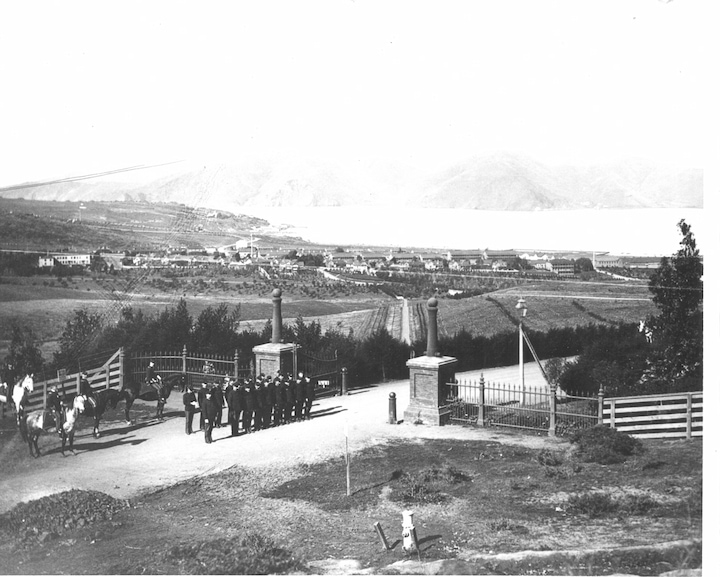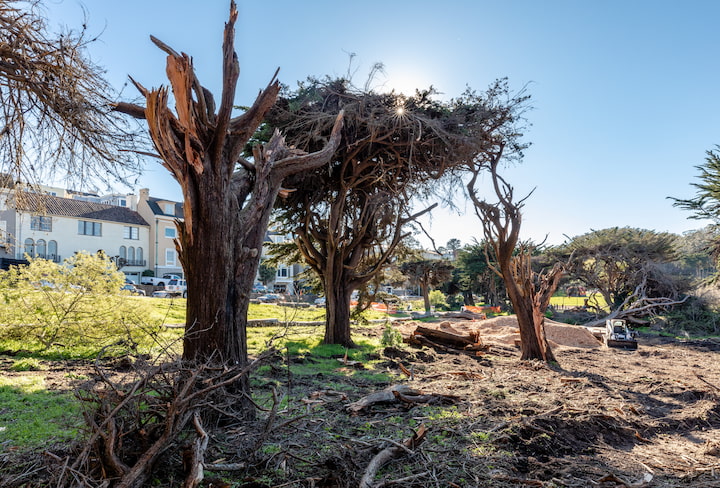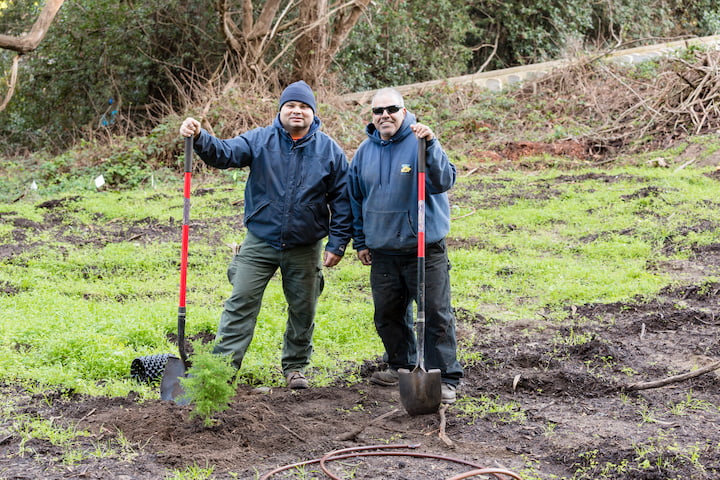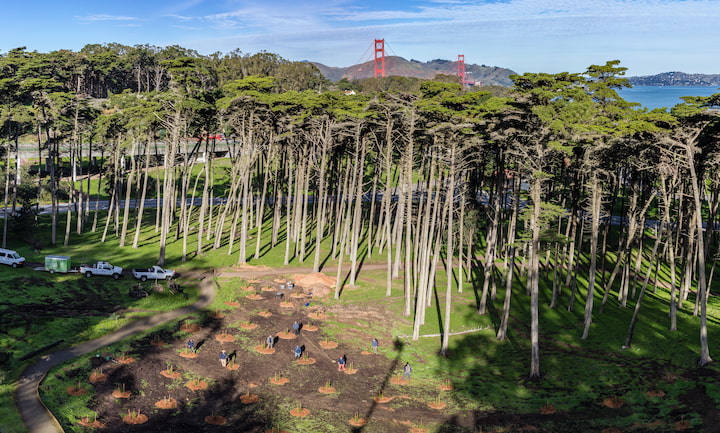Creating a Sustainable Forest
We’re creating a healthy forest that supports a diverse array of native plants and wildlife.
It feels like the Presidio’s eucalyptus, pine, cypress, and redwood trees have always been here. But the forest is man-made, planted by the U.S. Army in the late 1800s to make the military post look bigger and protect it from prying eyes.
A century later, many trees are at the end of their natural life. So, we’re gradually revitalizing the forest, preserving its historic character and keeping it healthy for generations to come. As we plant, we’re bringing back native plant species that were here long before there was a forest so the park’s landscape is beautiful and able to support a diverse array of wildlife.
Making the Presidio Forest
If you enjoy the Presidio forest’s beauty and tranquility, you have U.S. Army Major William A. Jones to thank. In 1883, he proposed an ambitious tree planting program, inspired by the country’s new urban parks including San Francisco’s Golden Gate Park. In 1886, his plan began to come to life as Army soldiers, with help from citizens and Scout troops, planted 300,000 trees.

Though beautiful and a great protection from the wind, the forest was never thinned, and trees spread beyond the ridges and high points where they were intended to be. The forest grew to be nearly 420 acres by the early 1900s, significantly displacing the native sand dune habitat native.

A Historic Presidio Forest
In 1962, the Presidio was declared a National Historic Landmark District, with the forest being the single largest contributing feature. However, by the time the Army closed its post in 1994 and the Presidio became a park, the forest badly needed revitalization, along with other habitats.
Restoring a Healthy & Sustainable Presidio Forest
In 2001, the Presidio Trust and National Park Service published the Presidio Vegetation Management Plan, a blueprint for caring for the park’s natural areas, forest, and historic gardens. It called for restoring the forest within its historical boundary and maintaining its historic character as part of a healthy park landscape.

In 2003, we got to work, maintaining the trees to extend their lives while gradually replacing dying groves. Over the course of two decades, we’ve replanted 53 acres with 9,000 young trees, many grown at the Presidio Nursery.

As we do this work, we’re bringing back a diverse “understory” on the forest floor beneath the trees by planting coyote bush and dozens of other species native to the park. This creates a colorful and vibrant landscape that attracts the birds and insects that support a diverse ecosystem.
Learn more in this feature story from ABC-7 news, recorded in 2023 to mark the 20th anniversary of the Presidio reforestation program. Read also the Presidio Forestry Program Fact Sheet.
Video: The Presidio’s Reforestation Program
In 2003, we began creating a forest that supports biodiversity and that can withstand climate changes so it’s there for future generations to enjoy. Watch this brief video featuring the Presidio Trust Associate Director of Natural Resources Lew Stringer and Forester Stephen Duffy.
Presidio Forest Fast Facts
- The Presidio forest is 306-acres with 75,000 trees.
- Five species make up 90 percent of the Presidio forest: Monterey cypress, Monterey pine, blue gum eucalyptus, blackwood acacia, and coast redwood.
- From 2003 to 2024, the Presidio Trust’s forestry crew planted 9,500 trees across 60 acres.
- The typical life span of Monterey pine is 80 to 100 years, while the life span of Monterey cypress is from 100 to 150 years or more. Blue gum eucalyptus live much longer.
- Dying trees often get a second life in the park, repurposed as benches, fencing, and even artwork like Andy Goldsworthy’s Spire, Wood Line, Tree Fall, and Earth Wall.
- More than 140,000 linear feet of Monterey cypress from the Presidio forest was milled to create all of the benches, picnic tables, and other site furnishings on the Presidio Tunnel Tops.